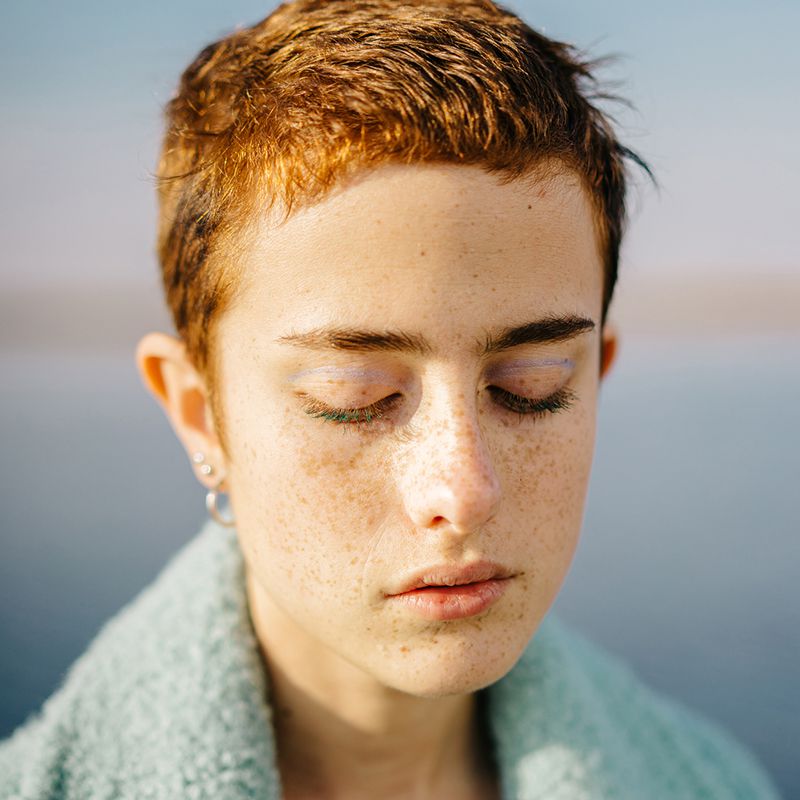How to Get Rid of and Prevent a Pimple Inside Your Nose Because Yes, That Happens
Acne breakouts can happen to anyone, anywhere on the face or body. Most people have probably dealt with a pimple on their chin, forehead, chest, or back, but what about the nose? More specifically, the inside of the nose? Pimples can pop up anywhere that a hair follicle or pore is present, and the insides of our nostrils are not exempt. But, why do people break out there? And can you be sure that it’s actually a pimple?
We spoke with two board-certified dermatologists to find out why inner nose breakouts happen, what to do about them, and how to tell if they’re actually another skin issue altogether.
Common Types of Pimples
“It may sound like a bizarre spot to get acne symptoms, but inside and around the nose can often be affected by acne or acne-like bumps,” says Chang. While many people refer to any bump as “acne,” breakouts are a symptom of the condition, and appear as various types. “Breakouts inside the nose can present in a variety of ways, including comedones or whiteheads, inflamed papules, pustules, cysts, as well as larger boils or abscesses. They can be associated with no symptoms or may present with redness, pain and drainage.”
- Whiteheads. Also known as closed comedones, whiteheads appear as small, flesh-colored bumps on the surface of the skin.
- Papules and pustules. These types of acne are what many people think of when they think of a pimple: small to medium-sized red bumps, either with or without a white head in the center. “Pimples are common on the nose and inside the nostrils because of the high concentration of oil glands in that part of the face,” says Zeichner. “The most common types of acne I have seen around the inside of the nostrils are pustules or blackheads.”
- Cysts. Cysts are often large, red bumps that rest just under the surface of the skin, making them impossible to pop and somewhat more difficult to treat than some other types of acne symptoms. A cyst inside of the nose can lead to pain or sensitivity.
Causes and Prevention
Breakouts inside the nostril can be due to multiple factors, namely clogged pores, dead skin cells, and ingrown hairs.
- Clogged pores. Like all acne symptoms, pimples here occur when a pore becomes clogged with oil and dead skin cells, which form acne-causing bacteria known as P. acnes. “Similar to acne on the face and body, oil glands in and around the nose can become blocked,” says Dr. Chang. “This can lead to clogged pores and inflammation, subsequently triggering acne.”
- Irritating triggers. “Avoid triggering factors, like tweezing or plucking nasal hairs, nose picking, and nose piercing,” Chang explains. Avoid rubbing, irritating, or blowing your nose too hard, as this might lead to excess irritation and worsened inflammation.
- Ingrown hairs. “Ingrown hairs can also happen inside the nose, leading to red, painful bumps,” says Chang. “Tweezing or plucking nose hairs can predispose you to ingrown hairs. They typically resolve on their own, but warm compresses can help.”
- Keep your skin clean. We can’t exactly control how much oil our bodies naturally produce (to a degree), but we can keep the surface of our skin clean and exfoliated, which can prevent clogged pores. “Wash your face with a salicylic acid based cleanser to remove excess oil and dead cells from the surface of the skin,” says Zeichner.
- Prevent pimples at the first sign. Acne symptoms begin forming inside of the pores before we see breakouts on our skin, but if you suspect that a pimple is about to appear, you may be able to prevent it, or at least send it packing more quickly. “If you develop a red or painful bump that may be the start of a pimple, apply a product with benzoyl peroxide to lower levels of acne causing bacteria and to calm inflammation,” says Zeichner. Benzoyl peroxide is effective at killing acne-causing bacteria, but salicylic acid may prevent pores from clogging in the first place as it removes dead skin cells.1 If you have chronic breakouts in and around your nose, a salicylic acid wash or treatment may work well at reducing symptoms. “If you are prone to acne inside or around the nose, products containing salicylic acid may help to unclog the pores and prevent acne formation,” Chang adds. “I only recommend using these products on the exterior portion of the nostril and avoiding applying it too deep within the nose, as this can cause excessive irritation.”
Sometimes, bumps inside of the nose may not actually be acne, but other skin conditions. In order to get rid of acne breakouts, you’ll need to rule out some common conditions that may affect the interior of the nose.
- Bacteria. While bacteria is a known cause of acne, other forms of bacteria can lead to a different type of skin infection: “Nasal vestibulitis, or nasal folliculitis, is a localized infection of the hair-bearing area of the nose called the nasal vestibule,” says Chang. “It presents as redness, painful swelling, crusting and sometimes a boil or furuncle in the nostril. It is usually caused by the bacteria S. aureus. Nasal vestibulitis can occur as a primary infection or secondary infection, with risk factors including nasal hair plucking, nose blowing, nose picking, and nose piercing. Severe cases can lead to cellulitis as well as more serious and widespread infection.”
- Virus. “Recurrent painful nasal bumps or scabs may be an indication of cold sores, due to herpes simplex virus,” says Chang. Viral infections cannot be cured, but their symptoms can be managed with medication. “If you have recurrent Staph or HSV infections, antibiotics or antivirals, respectively, can help prevent future infections.”
How to Treat a Pimple in Your Nose
A breakout inside of your nostril is no less irritating than a pimple anywhere else on the skin, but it should be treated just a little differently on account of its location. Namely, it’s recommended that you treat the area around the breakout—like the outside of the nose, edges of the nostrils, and the skin just below the nose, rather than applying products inside, which could cause irritation.
- Make sure it’s a pimple. Before you can effectively eliminate a breakout, make sure you know exactly what it is so you can get your treatment plan right. “I recommend treating pimples inside the nose after consulting with your dermatologist to get an accurate diagnosis,” suggests Chang. “Appropriate treatment depends on the cause of the pimple.”
- Cleanse around the area. All skin needs to be cleansed regularly, especially for anyone who is acne-prone. This applies to the nose as well. “[A face wash like] Inn Beauty Foam Around cleanses with a mix of hydroxy acids to remove oil, dirt, and dead cells from the surface of the skin,” says Zeichner. Rather than suds up inside of the nose, stick to washing the skin around your nostrils to prevent any possible irritation.
- Look to topical treatments. “Acne vulgaris may be treated with acne treatments, like topical salicylic acid, benzoyl peroxide, and topical antibiotics,” says Chang. “Severe cases may require oral antibiotics.” Zeichner recommends Neutrogena On the Spot Acne Treatment ($9) with 2.5% benzoyl peroxide to “shrink a pus pimple,” as well as Clean and Clear Advantage Spot Treatment with 2% salicylic acid “to dry out a blackhead.”
- Drop the occlusive products. Occlusive products are moisturizers which create a protective barrier on the outside of the skin, trapping moisture in. While occlusives can hydrate dry skin, it can lead to clogged pores on some skin types. “Breakouts are caused by oil being trapped in the follicles by sticky skin cells. This allows for overgrowth of acne causing bacteria and subsequent inflammation,” explains Zeichner. “Occlusive ointments can physically block pores directly leading to breakouts.”
- Keep your overall health in check. Our skin is the largest organ on our bodies, and when we treat ourselves well, inside and out, it’s usually apparent on our complexions. “Stress, diet, and occlusive skincare products can lead to acne flares,” Zeichner states. “Stress, sugary foods, and dairy promote oil production which block the pores.”









